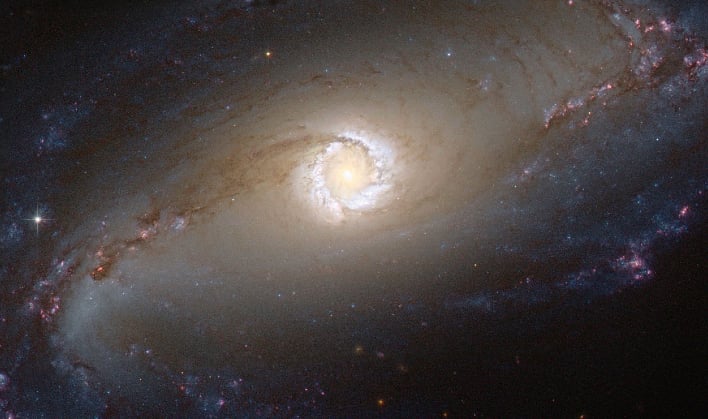Hubble Telescope Gazes 48M Light Years From Earth And A Gorgeous Galactic Eye Stares Back
The image above was captured by the ESA/NASA Hubble telescope on March 14th. It showcases the complexity of the web of stars and dust at NGC-1097's center, which is located in the constellation Formax. The degree to which the galaxy's structure is revealed is due to the capabilities of two instruments aboard Hubble. Those being the Wide Field Camera 3 (WFC3) and the Advanced Camera for Surveys (ACS).
WFC3 was installed during Servicing Mission 4 that took place in May of 2009. The instrument has two channels, one for ultraviolet light and visible light (UVIS) and the other for near infrared (NIR). The UVIS channel uses a charged-coupled device (CCD) that is 16 megapixel, high sensitivity, low noise array. The NIR channel uses a 1 megapixel array. The combination of both of these technologies provides WFC3 the ability to provide performance over a broad range of wavelengths.
The Advanced Camera for Surveys was installed during Mission 3B, which took place in December of 1999. Its wavelength range extends from the ultraviolet, through the visible and out to the near-infrared. The instrument is comprised of three sub-instruments. The Wide Filed Channel, the High Resolution Channel, and the Solar Blind Channel. The ACS is designed to peer deep into the depths of space and locate galaxies and galaxy clusters in the remote and ancient Universe.
Raw images from telescopes are always in grayscale, only capturing the amount of light across a single, broad range of wavelengths in order to maximize the amount of light that is being collected. However, color images from telescopes are indirectly possible with the use of filters. These color images are enabled by sliding a filter over the aperture of an instrument, like the WFC3 or ACS. When this is done, only light from a very specific wavelength range is let through. For example, one filter used in the image shown up top is for green light around 555 nanometers. The image captured of NGC 1097 is composed of images "using seven different filters in total", according to the European Space Agency (ESA). This is not the first time that Hubble has set its sights on NGC 1097. Back in 2015, researchers were able to estimate the galaxy's black hole having a mass of 140 million suns. In contrast, the Milky Way is about 4 million suns. An image captured back in December of 2012, as seen above.
As the James Webb Space Telescope continues it mirror alignment, astronomers and scientists are looking forward to what all the new technology aboard JWST will be able to uncover. Images like the ones from Hubble will be used alongside those of JWST in providing even more data of the realm that lies beyond our own.
Top Image Courtesy of ESA/NASA



